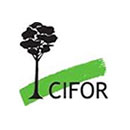Over the next few months leading up to the fifth Conference of the Parties (COP-6) of the Climate Change Convention in Hague in November you will hear a lot about carbon and forests. Previous conferences established the Clean Development Mechanism (CDM), which allows developed countries to receive credit for certain projects they finance in developing countries when they calculate whether they have complied with the carbon emissions targets they agreed to in Kyoto. One big issue at COP – 6 will be whether projects that use forests as carbon sinks will be included under the CDM. At present the short-term outlook does not look good in that regard, but that may change.
Much of the controversy over whether to include forest projects in the CDM revolves around accounting, monitoring, and leakage. How can we reliably measure how much carbon forests contain and how long they will retain it? How can governments verify claims about forest carbon stocks in a cost-effective, transparent, and credible fashion? How do we know that if we stop loggers and farmers from working in one forest they won’t simply move elsewhere and keep on carrying out activities that release carbon into the atmosphere?
To answer such questions, several governments and utilities companies have financed pilot forest carbon projects to see how the whole thing might work in practice. One such project, the Noel Kempff Climate Action Project in Bolivia, recently released a set of ’Technical Operating Protocols for Carbon Monitoring, Leakage Monitoring, Accounting and Reporting, and Verification and Supervision’ that explain exactly how the project plans to address these issues. That Noel Kempff project involves the expansion of a national park and payments to holders of forest concessions to stop logging in the region.
The protocols address both micro and macro level leakage. Micro level leakage refers to what the specific logging companies and local farmers who lost access to the forest as a result of the project go on to do. The project has signed leakage agreements with the logging companies and it has financed activities designed to involve farmers that live near the park in activities that emit less carbon. It also attempts to monitor both groups’ activities and uses control sites to compare the amount of carbon emitted or sequestered in project areas and in similar locations where the project is not present. At the macro level, the project will study the general trends in land use, timber harvesting, and markets in the region to try to identify signs of the project’s possible effects at that level.
We want you to share Forests News content, which is licensed under Creative Commons Attribution-NonCommercial-ShareAlike 4.0 International (CC BY-NC-SA 4.0). This means you are free to redistribute our material for non-commercial purposes. All we ask is that you give Forests News appropriate credit and link to the original Forests News content, indicate if changes were made, and distribute your contributions under the same Creative Commons license. You must notify Forests News if you repost, reprint or reuse our materials by contacting forestsnews@cifor-icraf.org.
Further reading
To send comments to the authors of the protocols or obtain a free electronic version in English or Spanish, you can write Margo Burnham at: mailto:mburnham@tnc.org




